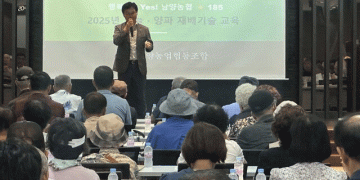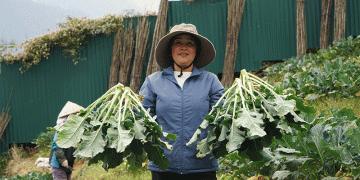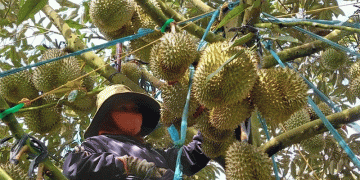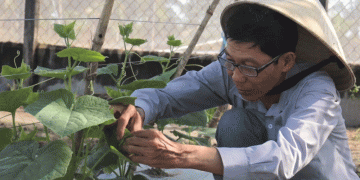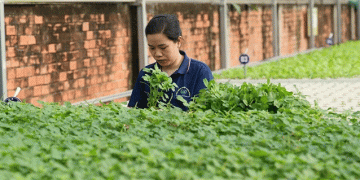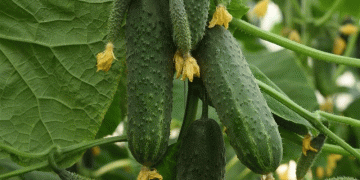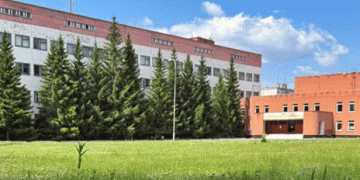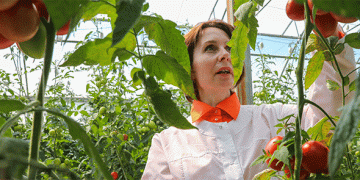In a significant demonstration of agricultural extension excellence, Namyong Agricultural Cooperative in Hwaseong, Gyeonggi Province recently hosted 150 members for comprehensive garlic and onion cultivation training. This event represents a growing trend of cooperatives taking active roles in bridging the gap between research institutions and farm-level implementation, directly addressing productivity challenges through targeted education.
Educational Program Structure and Content
The training featured specialized instructors bringing both technical expertise and practical experience. Cha Ji-hyun, team leader from Taean County Agricultural Technology Center, covered garlic production, while Hwang Dae-yeon, manager of NH Seed’s Gyeonggi-Chungbuk branch, addressed onion cultivation. The curriculum focused on field-centered farming techniques specifically relevant to local growing conditions.
The high attendance and enthusiastic participation—with extended Q&A sessions following formal presentations—demonstrate the strong demand for practical agricultural education. Notably, participants requested expanded training to include other crops, indicating broader interest in continuous learning opportunities.
The Economic Imperative for Specialized Training
The focus on garlic and onion production addresses significant economic opportunities for Korean farmers. Recent data from the Korea Rural Economic Institute shows:
- Garlic yields can vary by 40-60% between trained and untrained growers
- Proper cultivation techniques can reduce input costs by 15-25% while maintaining yields
- Onion producers implementing best practices achieve 20-30% higher premium-grade yields
- educated growers report 25% higher profitability due to reduced waste and improved quality
Global Context for Technical Training
The approach aligns with successful models worldwide. According to FAO data, every dollar invested in agricultural extension programs generates $3-5 in increased productivity. The World Bank reports that countries with robust agricultural education systems achieve 2-3% higher annual agricultural growth rates compared to those with limited extension services.
Cooperative-Led Education Model
Namyang Agricultural Cooperative’s initiative represents an effective model for agricultural knowledge transfer. Unlike government-led programs, cooperative-based education offers several advantages:
- Relevance: Content tailored to specific local conditions and member needs
- Trust: Delivery through established relationships rather than external authorities
- Continuity: Ongoing support rather than one-time training events
- Practicality: Focus on immediately applicable techniques rather than theoretical concepts
Technology Adoption and Implementation Challenges
Despite the proven benefits, adoption of improved cultivation techniques faces several barriers:
- Risk aversion: Farmers may hesitate to change established practices
- Implementation costs: Some techniques require initial investment
- Knowledge retention: Complex information may require repeated exposure
- Adaptation needs: Techniques must be customized to individual farm conditions
The cooperative’s approach of bringing in both research institution experts and seed company representatives helps address these challenges by providing multiple perspectives and support options.
Impact Assessment and Success Metrics
Effective agricultural education programs typically show measurable results within 1-2 growing seasons. Successful implementation leads to:
- 15-25% increase in yield per hectare
- 10-20% reduction in production costs
- 30-40% improvement in product quality metrics
- 20-35% increase in farmer confidence in adopting new technologies
Future Directions and Expansion Potential
The enthusiastic member response suggests significant potential for expanding such educational initiatives. Cooperative chairman Park Joo-shin’s commitment to continuing “customized agricultural education needed in the field” indicates this event represents the beginning of an ongoing program rather than a one-time activity.
The requested expansion to other crops aligns with successful agricultural extension models that gradually build comprehensive educational programs based on demonstrated demand and proven success.
Namyang Agricultural Cooperative’s garlic and onion cultivation training represents more than just a single educational event—it demonstrates a powerful model for agricultural knowledge transfer that combines technical expertise, practical application, and cooperative strengths. The enthusiastic response from 150 members underscores the strong demand for such programs and their potential to directly impact farm productivity and profitability.
This approach offers valuable lessons for agricultural communities worldwide. By leveraging cooperative structures to deliver targeted, practical education based on member needs, agricultural organizations can significantly accelerate the adoption of improved practices and technologies. The focus on high-value specialty crops like garlic and onions demonstrates how strategic educational investments can yield substantial economic returns for farmers.
The success of this initiative suggests that cooperative-led education could become a cornerstone of agricultural development strategies, particularly as farmers face increasing pressure to improve productivity, quality, and sustainability. By continuing to expand and refine such programs, agricultural cooperatives can play crucial roles in ensuring the competitiveness and viability of their members in an increasingly challenging agricultural landscape.
The ultimate measure of success will be seen in coming harvests—in increased yields, improved quality, and enhanced profitability for the participating farmers. Based on global experience with similar programs, the prospects appear excellent for tangible, measurable benefits resulting from this investment in agricultural knowledge and skills.
